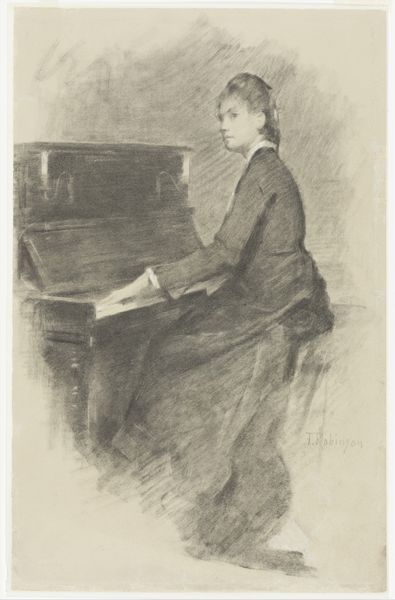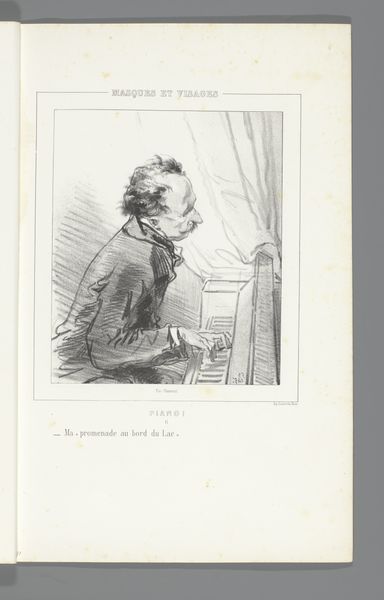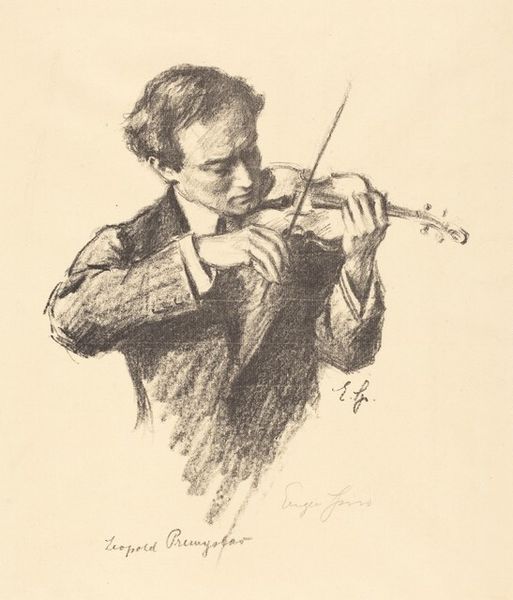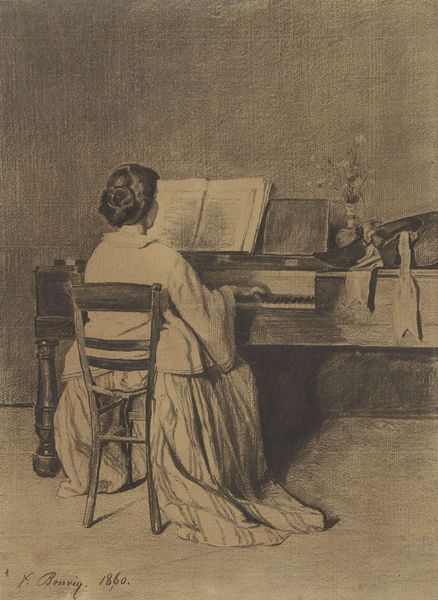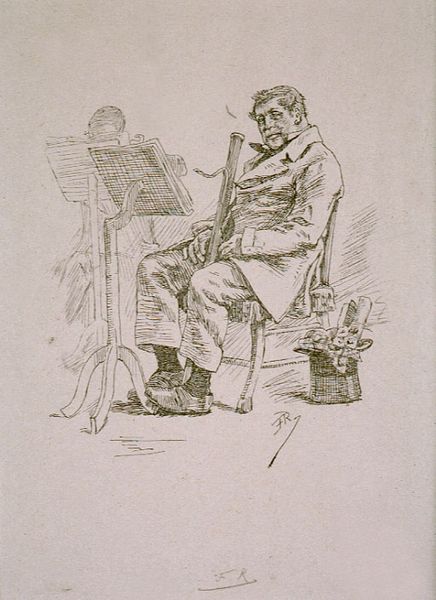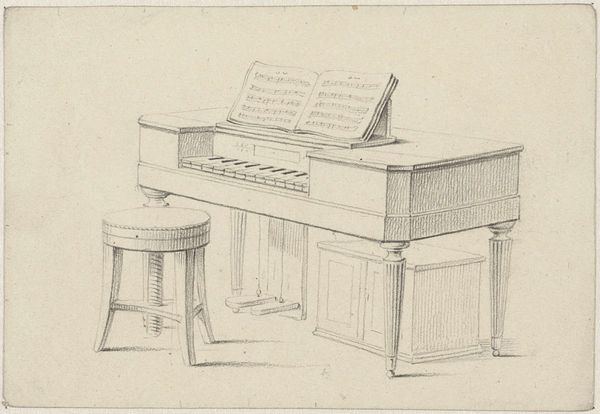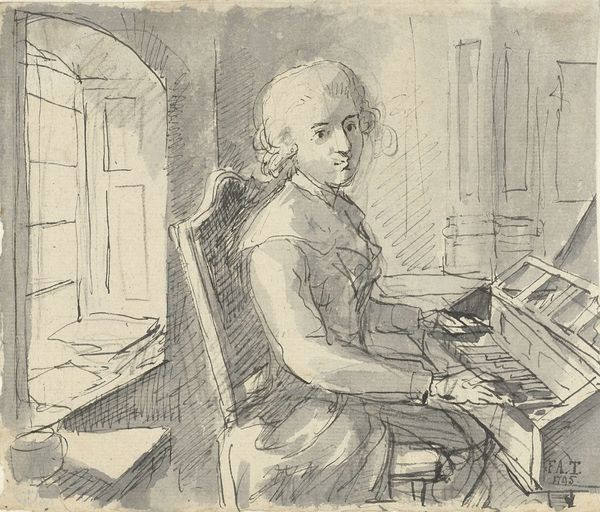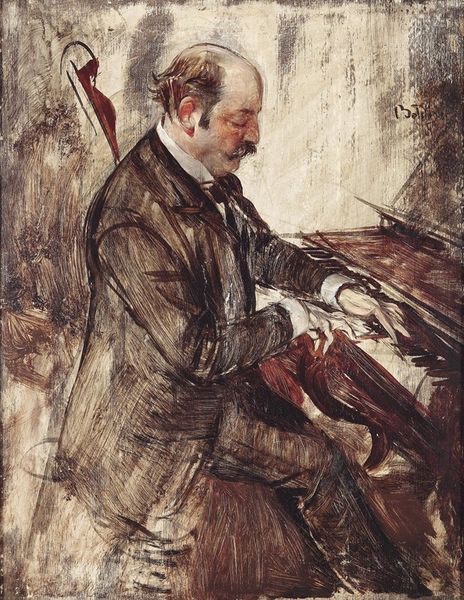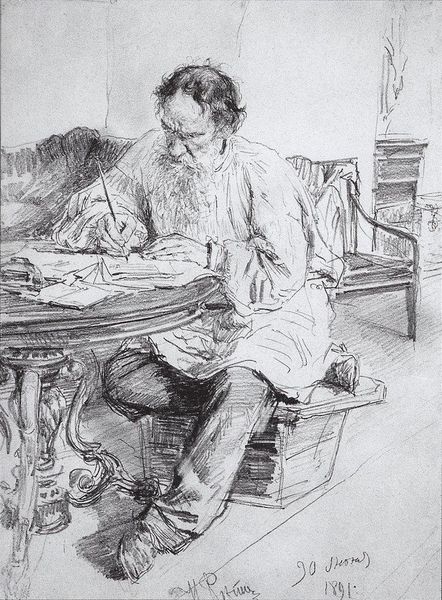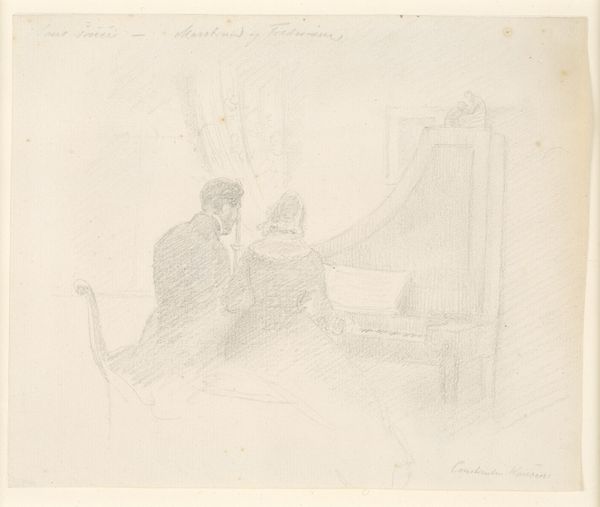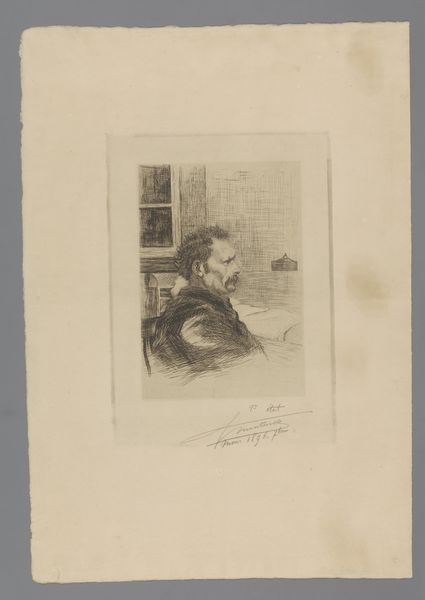
The Artist's Brother-in-Law, Ludwig Hassenpflug, Preparing to Play the Piano 1826
0:00
0:00
drawing, pencil
#
portrait
#
drawing
#
pencil sketch
#
figuration
#
romanticism
#
pencil
#
line
#
portrait drawing
#
genre-painting
Dimensions: sheet: 25.2 x 21.2 cm (9 15/16 x 8 3/8 in.)
Copyright: National Gallery of Art: CC0 1.0
Curator: What strikes me most about this work is the way the subject seems caught between worlds. Ludwig Emil Grimm's 1826 pencil drawing, "The Artist's Brother-in-Law, Ludwig Hassenpflug, Preparing to Play the Piano," feels like a captured moment, fleeting and still at once. Editor: Yes, I see what you mean. There’s something so delicate and intimate about it. Look at the quality of the line – almost vibrating with a raw, tentative energy, it feels incredibly direct and unvarnished, which only invites further scrutiny, of course. And you have to wonder – how conscious was Grimm of portraying bourgeois culture, or its inherent contradictions here? Curator: It’s interesting you frame it that way. Perhaps consciously or unconsciously, Grimm presents a compelling portrait of early 19th-century Romanticism—the intimacy of domestic life blended with an almost yearning gaze towards the sublime, wouldn't you say? Ludwig is preparing himself, physically postured at the ready, and with scores visible atop the pianoforte, suggesting a liminal space before art begins. Editor: And don’t forget the role of the piano itself! Its presence speaks volumes about access, labor, and even social performance in this era. Think about the material realities of producing and owning such an instrument: from the extraction of wood, ivory, and metals, to the skilled labor required to assemble and tune it. Curator: Absolutely. And the fashion—that wonderful dressing gown he's wearing; almost like a fashionable performance within a performance. Grimm emphasizes line to capture textures in domestic adornment and suggests an intellectual vibration and cultural harmony that Ludwig represents as an individual who is also posed formally as subject of a sketch. Editor: I agree completely. All these details come together to make something which is deeply resonant – revealing so much about the sitter’s social milieu, as well as broader historical and artistic currents swirling through Grimm's milieu. Curator: The beauty of a piece like this, I think, lies in its layers, like those quiet layers that might hum under a piano piece; so easily, subtly complex. Editor: Leaving us to really consider the layers of production behind even the seemingly simplest images or the simplest drawing.
Comments
No comments
Be the first to comment and join the conversation on the ultimate creative platform.
